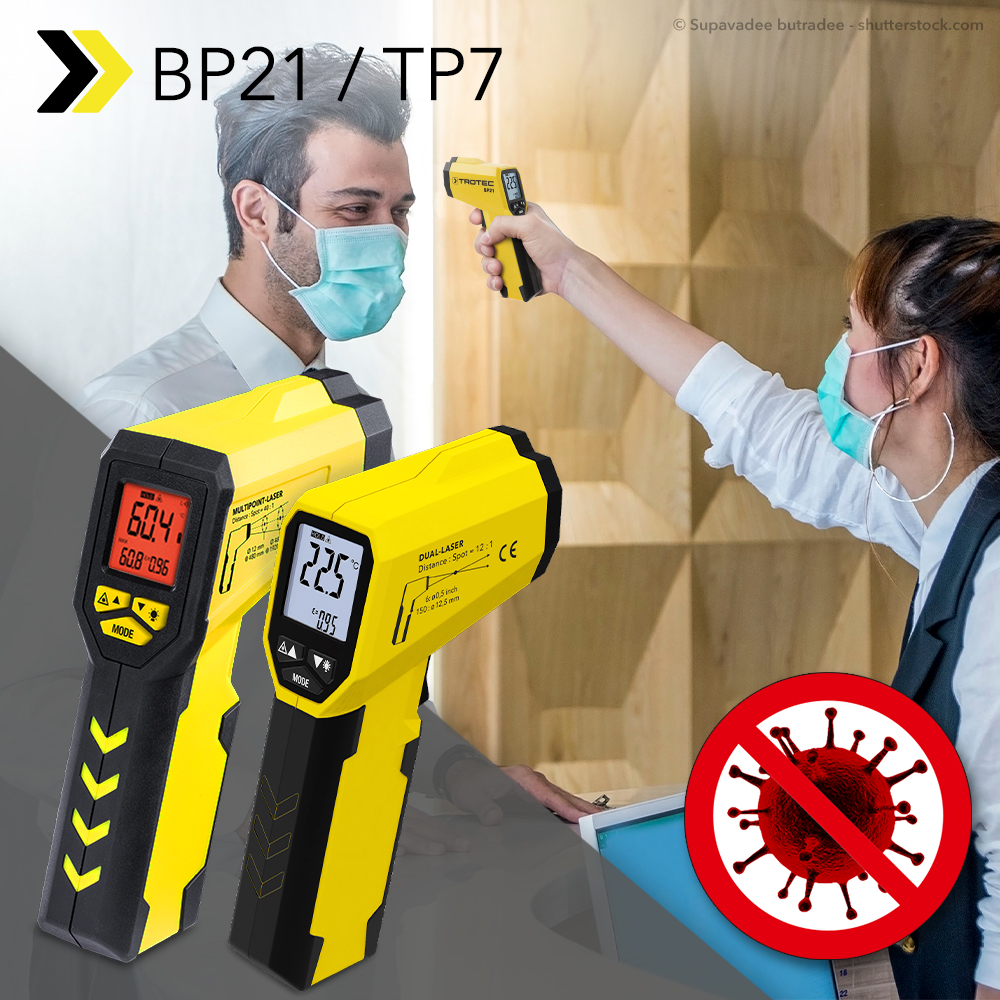In times of corona crisis, you can see at airports, train stations, supermarkets, public buildings or other access points where many people get their temperature checked every day before entering. This so-called mass screening to identify people with elevated temperatures also has the potential for errors, if not used correctly or with the right infrared thermometer.
Infrared thermometers are able to reliably determine the temperature of an object without touching it. It is no problem if there is a slightly greater distance to the actual object. The infrared sensor measures the heat radiation on a surface. There are, however, other areas in which thermometers with infrared technology are used, such as for determining body temperature. Because we are talking about infrared clinical thermometers. However, many do not know the exact difference between the two devices or even think they are identical. However, the improper use of industrial pyrometers, which are not approved for human diagnostic purposes, can lead to considerable misinterpretations.
Why is only a temperature of 32 – 34 °C displayed?
Infrared thermometers actually only display the temperature of the surface measured without corresponding correction factors, e.g. the forehead surface, but not the core body temperature, as is the case with professional thermometers offered especially for this purpose. The body shell temperature of a person is significantly lower than the core temperature. Infrared clinical thermometers work with special calculation algorithms and in a limited temperature measuring range of slightly more than the maximum body temperature, which makes them unsuitable for use outside this measuring range (approx. 34 – 42 C).
If an infrared pyrometer is used for rapid mass temperature control, the temperature at the forehead is always slightly lower than the actual core temperature of the human body. Results between 32 – 34 °C are no exception. Normally, these temperatures are considered hypothermia in humans if they are measured in the body core. On the surface of the body, however, they are normal with this method of measurement and correspond to a body temperature of a healthy person, who normally has a temperature between 36.5 and 37.4 °C.
Do not draw false conclusions from the displayed figure
If such an industrial pyrometer is used, the personnel should be trained that it should never be expected that a temperature of 38 °C is ever displayed. Even the display of a higher temperature compared to its predecessor can be an indication of an increased body temperature, even if the display only shows 35 °C, for example. Before using such devices, it is therefore strongly recommended to take comparative measurements with a real clinical thermometer. Here is an example
Determination of the temperature difference
- Using a suitable thermometer, determine the actual core body temperature of various test persons of different ages and take several parallel forehead temperature measurements with your pyrometer on each of the test persons. The forehead should be dry. Make sure that the measuring distance to the forehead is not more than 5 to 10 cm. Never touch the forehead of the person to be measured directly to avoid cross-infections. Keep the pyrometer as still as possible during the measurement and wait until the measured value has settled.
- Determine an average value from the measured values. For example, if the temperature measured by a clinical thermometer is 36.5 °C and the temperature measured by a pyrometer is 35.0 °C on average, it can be statistically assumed that the temperature measured by the pyrometer is on average about 1.5 °C below the core body temperature.
- If an alarm limit value can be set in the instrument, for example, assuming 38 °C as the reaction limit for an elevated temperature, the alarm in the instrument would have to be set to “36.5 °C”.
Other factors that play a role
The non-contact measurement of the temperature is normally done at the forehead. However, the forehead temperature is subject to fluctuations and depends, among other things, on age, body size, environmental conditions (wind, sun, rain) and the current form of activity of the person being measured.
If, for example, you sweat after physical exertion, the evaporative cooling falsifies the result more than if you do not sweat. If one comes from a cold environment into a warm one, the forehead will be cooler than normal for a while. This difference can be several degrees Celsius. The core body temperature, on the other hand, does not change but remains almost constant. And even a lighter skin tone gives different results than darker skin tone etc.
We would like to point out once again that the pyrometer measurement should only be seen as an indicative screening and cannot replace a suitable temperature measurement, e.g. in the mouth, armpit or rectum! Furthermore, infrared thermometers do not identify persons infected with corona.
Questions about infrared thermometers?
Always at your side when it comes to answering questions about environmental measurement technology: Trotec Customer Service. The experts on the subject of temperature measurement in all areas are happy to help you on +2452-962 400 or by e-mail: info@trotec.de
We look forward to helping you further.


